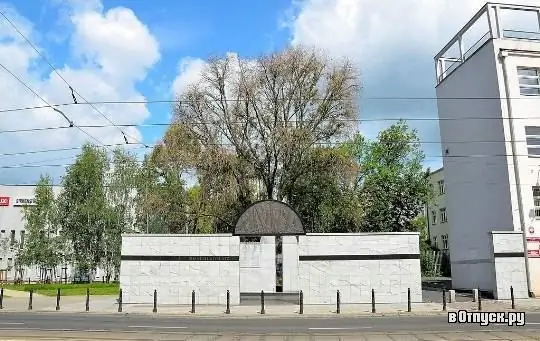
Description of the attraction
Umschlagplatz is a monument in Warsaw on the site of a former transfer point, from where in 1942-1943 the Germans deported Jews to the Treblinka death camp from the Warsaw ghetto.
In 1942, to facilitate the process of deporting Jews to the death camp, a special railway line was built, running from the main tracks to the transshipment point - umshlagplatz. Deportations began on 23 July 1942 and were carried out daily. Every day about 7 thousand people found themselves in this square. At the very beginning of the deportations, many Jews were lured to the Umschlagplatz by cunning, promising food or meeting with relatives. In total, over 300 thousand Jews were sent to the camps during the existence of Umschlagplatz in Warsaw.
The monument was unveiled on April 18, 1988, on the eve of the 45th anniversary of the ghetto uprising. The monument was designed by architects Hana Smalenberg and Vladislav Klamerus.
The monument is a white stone wall with a black stripe on the front of the monument. The walls are arranged in such a way that the internal space formed by them coincides with the dimensions of an open railway freight car - 20x6 meters. On the inner wall of the monument, the names from Abel to Jeanne are listed in alphabetical order - 400 popular pre-war Jewish names. The gates with a semicircular top symbolize the tombstone. The images of destroyed forests on the bas-relief signify an untimely violent death. On the axis of the gate, through a narrow vertical gap, you can see a growing tree behind the monument - a symbol of hope.
In June 1999, Pope John Paul II visited the monument.
In 2007-2008, the monument was overhauled.






